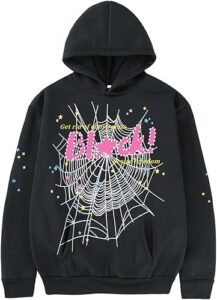Exploring the Avant-Garde Spirit of Comme des Garçons Designs
Introduction: Redefining Fashion’s Boundaries In the vast and ever-changing landscape of fashion, few names resonate with as much daring innovation...

Introduction: Redefining Fashion’s Boundaries
In the vast and ever-changing landscape of fashion, few names resonate with as much daring innovation as Comme des Garçons. Founded by the visionary Rei Kawakubo in Tokyo in 1969, the brand quickly became a global symbol of creativity and Comme Des Garçons intellectual rebellion. Comme des Garçons is not just about clothing; it is about rethinking the very purpose of garments, the ways in which they interact with the body, and the cultural messages they convey. Over decades, the label has cultivated a reputation for being both enigmatic and uncompromising, embodying the very essence of avant-garde design.
The Birth of an Avant-Garde Icon
Rei Kawakubo entered the fashion scene at a time when conventional beauty and wearable silhouettes dominated the runways. Her early collections shocked audiences by introducing asymmetry, deconstruction, and muted, unconventional color palettes. This was not fashion intended to flatter in a traditional sense—it was fashion designed to provoke thought. The term “avant-garde” perfectly fits Kawakubo’s ethos, as her work pushes beyond established norms, questioning the boundaries between fashion, art, and philosophy.
The brand’s emergence in Paris during the early 1980s cemented its reputation as a game-changer. Dubbed the “Hiroshima chic” era by some critics, these collections featured distressed fabrics, loose shapes, and a refusal to conform to Eurocentric ideals of elegance. Instead of offering clothes that enhanced traditional femininity, Kawakubo created pieces that allowed the wearer to redefine themselves entirely.
A Philosophy of Anti-Fashion
At the heart of Comme des Garçons lies an anti-fashion philosophy—rejecting the idea that clothing must be decorative, feminine, or even conventionally wearable. Kawakubo’s designs challenge societal expectations about how a garment should fit, look, and move. This commitment to breaking the rules has led to collections filled with exaggerated proportions, sculptural forms, and experimental textiles that feel more like wearable art than commercial apparel.
Kawakubo’s disregard for trend-driven fashion means that Comme des Garçons stands outside the cycle of seasonal must-haves. Instead, each collection is a thematic exploration, often inspired by abstract concepts such as “the future of silhouette” or “the meaning of beauty.” These intellectual underpinnings make her designs as much a statement about culture and identity as they are about clothing.
The Art of Deconstruction
One of the most defining features of Comme des Garçons’ avant-garde spirit is its mastery of deconstruction. Rather than hiding seams, irregular hems, or unconventional stitching, Kawakubo often exposes them, creating an intentional rawness in the garments. This aesthetic choice dismantles traditional notions of perfection in fashion, replacing them with a celebration of imperfection and authenticity.
Deconstruction also allows Kawakubo to reimagine garments from the ground up—transforming jackets into dresses, dresses into layered sculptures, and shirts into asymmetrical hybrids. These experiments reveal a deep understanding of garment construction while simultaneously undermining its established rules.
Conceptual Storytelling on the Runway
Comme des Garçons’ runway shows are legendary for their theatrical and conceptual nature. Kawakubo does not treat the runway as a mere display of seasonal looks, but rather as an artistic stage where ideas come to life. Her models often move through surreal, narrative-like environments, wearing outfits that may include bulbous padding, architectural ruffles, or garments layered into visually complex ensembles.
These shows are not always about selling clothes in the traditional sense. Instead, they serve as thought-provoking statements on the human body, social norms, and cultural change. They invite audiences to question what fashion can be when freed from the constraints of commercial viability.
Collaboration and Cross-Disciplinary Influence
Although Comme des Garçons is fiercely independent, Kawakubo has embraced collaboration as a way to expand her creative reach. Over the years, the brand has partnered with artists, designers, and even mainstream companies like Nike and Converse, reinterpreting iconic items through an avant-garde lens.
These collaborations often merge the brand’s unconventional aesthetic with more accessible forms, allowing the avant-garde spirit to infiltrate everyday fashion. This balance between radical artistry and cross-market influence has helped the brand remain relevant while staying true to its nonconformist ideals.
Influence on the Global Fashion Landscape
Comme des Garçons’ impact on the fashion industry cannot be overstated. The brand has inspired generations of designers to embrace creative freedom, reject commercial pressures, and pursue ideas that may at first seem unmarketable. Designers such as Junya Watanabe—once Kawakubo’s protégé—have taken the brand’s avant-garde ethos into their own labels, extending its influence far beyond the Comme des Garçons runway.
The label’s philosophy has also shaped how consumers think about fashion. By presenting garments that challenge wearability, Comme des Garçons encourages people to view clothing as a form of personal and political expression rather than just a commodity. This shift in perspective has made the brand a touchstone for those who see fashion as a medium for intellectual and artistic dialogue.
The Enduring Spirit of Experimentation
Even after decades in the industry, Comme des Garçons shows no signs of creative stagnation. Kawakubo continues to explore uncharted territory with every collection, refusing to settle into a signature style that could be easily replicated or commodified. This relentless CDG Hoodie commitment to experimentation is what allows the brand to maintain its avant-garde spirit.
While many fashion houses eventually settle into producing refined variations of past successes, Comme des Garçons thrives on unpredictability. Fans and critics alike never know exactly what to expect from an upcoming collection, and that sense of curiosity and excitement is central to the brand’s enduring relevance.
Conclusion: The Legacy of Comme des Garçons
Comme des Garçons stands as a living testament to the power of radical creativity in fashion. Its designs are not meant to simply adorn the body but to challenge the mind, stir emotion, and provoke discussion. Rei Kawakubo’s work embodies the essence of the avant-garde—fearless, questioning, and unafraid of alienating those who prefer the safety of convention.
In an industry often dominated by the pursuit of commercial success and mass appeal, Comme des Garçons offers something rare and vital: a space where fashion can remain a form of intellectual and artistic exploration. This avant-garde spirit ensures that the brand will continue to inspire, challenge, and reshape the future of fashion for generations to come.






